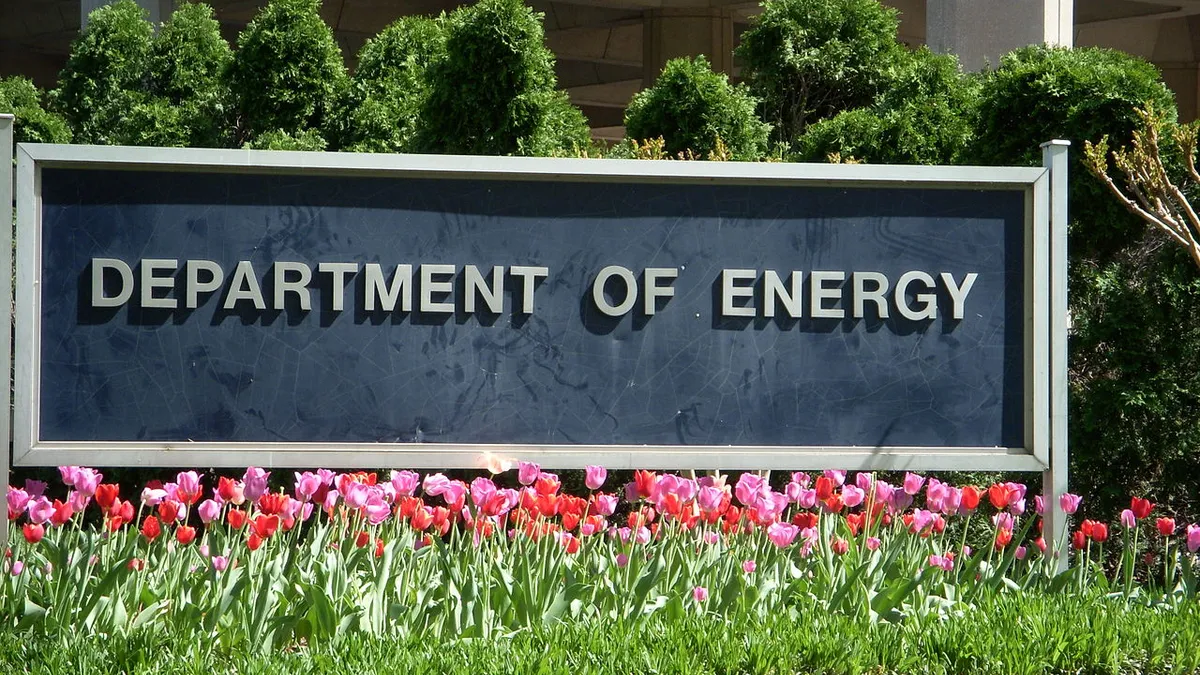Dive Brief:
- The U.S. Department of Energy (DOE) has set a goal to reduce the cost of utility-scale, long-duration energy storage by 90% within a decade to bolster a grid powered by renewable energy.
- The program, dubbed Long Duration Storage Shot will encourage development of systems with a duration of at least 10 hours, which can help mitigate the day-to-day and seasonal variability of renewable energy. A DOE official said the program will have a "technology-inclusive approach," including electrochemical, mechanical, thermal and chemical carrier sources.
- The department will advance the cost-cutting goal by funding research and development at national labs, establishing large-scale demonstrations and deployments and encouraging more domestic manufacturing. The goal is the second in the administration's Energy Earthshots Initiative and fits into the crosscutting Energy Storage Grand Challenge.
Dive Insight:
The Biden administration has set a goal of powering the country with 100% clean electricity by 2035, which experts say will require vast deployment of energy storage to collect renewable energy when it is generated and distribute it to the grid when it's needed.
Storage installations have boomed recently; a Wood Mackenzie analysis with the Energy Storage Association found that 1,464 MW of new storage came online in the U.S. in 2020, 179% more than in 2019. However, most of that has been in the form of short-duration storage (largely lithium ion batteries) that provides up to 10 hours of discharge. According to a National Renewable Energy Laboratory (NREL) analysis of DOE data, some 93% of the storage installed worldwide is short-duration.
Experts agree that long-duration storage is necessary to shore up the grid and ensure a reliable power supply during periods of decreased renewable production. There are a range of technologies available for long-duration storage, from hydropower to pumped thermal, but there have been few breakthroughs in the market. NREL's analysis concluded more work is needed to boost the discharge efficiency and lower the cost for long-duration storage to displace fossil fuel or nuclear power, with the capacity cost needing to drop from $200 per kWh to $1 per kWh.
The earthshot initiative is designed to improve both of those metrics. According to the Energy Department, the initiative will involve funding opportunities to incentivize deployment and research, with an amount dependent on the budget that Congress passes this year.
A DOE official described the goal as "aggressive but achievable." The 90% reduction will be based on the baseline of the $162/KWh cost for a 100MW lithium-ion battery in 2020. The reduction is slightly ahead of the cost reduction for lithium-ion batteries over the past decade, the administration official said, but is in line with DOE modeling.
Currently, DOE says pumped-storage hydropower is the largest source of long-duration storage on the grid. Some utilities and businesses are exploring thermal pumped storage, which stores energy as heat in molten salt or sand and dispatches it as electricity through a heat pump. Others have invested in compressed air, which stores energy through pressurized air in large chambers and caves, or thermal storage through heated bricks.
The administration's first earthshot target seeks to make hydrogen a more competitive fuel source by dropping its cost by 80% to $1 per kilogram in a decade.
The Energy Department in June also announced a series of actions to boost U.S. manufacturing and innovation for lithium-ion batteries, which was more targeted for electric vehicle and mobile applications rather than stationary energy storage. The department also has an existing research program on long-duration storage, bolstered by a $30 million annual research investment with the Defense Department, through 2025, included in the Energy Act of 2020, which passed as part of the fiscal year 2021 omnibus in December.














